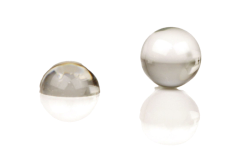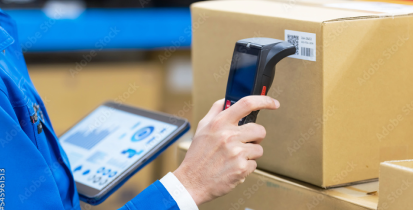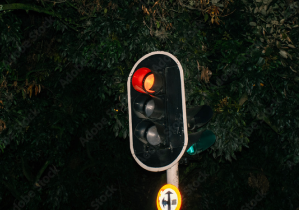

Stock Available
Bespoke Ordering Available
Contact us now
Find out more about our custom ball & half ball lenses
Call +44 (0)1622 859444 Call +1 401 583 7846
At Knight Optical, leaders in custom optical solutions, we provide an extensive array of competitively priced optical ball lenses, including half ball lenses and large ball lenses, tailored to meet your specific needs. Our offerings span from micro-optics with a diminutive 0.13mm diameter to more substantial lenses boasting a 150mm diameter.
To cater to your precise requirements, all our ball and half ball lenses are available in various grades. These range from high-precision grade 3 ball lenses, renowned for their exceptional sphericity and surface quality, to more commercially viable grade 100 ball lenses. Whether you’re seeking sapphire ball lenses or lenses with specialised half ball lens focal lengths, Knight Optical ensures you get the specifications you desire.
Their precise dimensions, straightforward alignment, and full rotational symmetry make them a cost-effective choice in optical solutions. These optical ball lenses are especially advantageous for achieving precise lens light ball effects, offering unparalleled focal length control, which is crucial in applications using ball and half ball lenses.
We also offer a variety of broader custom lenses.

Speak to our experts about your Custom Ball & Half Ball Lenses needs today
Call +44 (0)1622 859444 Call +1 401 583 7846Make a quick enquiry about Custom Ball & Half Ball Lenses Now
Dive into the forefront of optical solutions. Got questions about an optical product? Reach out now and let our expertise guide you.
Typical Dimensions of Ball & Half Ball Lens Materials
We offer a diverse range of materials for your optical ball lens and half sphere lens needs, including sapphire, N-BK7, UV fused silica (UVFS), ruby, cubic zirconia and high-index materials such as LASFN-9, LASFN-35, S-LAH78, and S-LAH79. Knight Optical can also offer uniform, full-surface AR coatings to optimise the ball lens performance.
When it comes to dimensions, our selection is quite comprehensive. Typical dimensions of the materials we can offer are as follows:
| Ruby | 0.12-15mm |
|---|---|
| Sapphire | 0.2 – 25.4mm |
| Fused Silica | 0.3 – 25.4mm |
| Spinel | 0.2 – 8mm |
| Cubic Zirconia | 0.2 – 20mm |
| Alumina 99.9% & 99.5% | 0.4 – 150mm |
| Zirconia Yttria | 0.4 – 150mm |
| Silicon Nitride | 0.4 – 25.4mm |
|---|---|
| Tungsten Carbide | 0.13 – 25.4mm |
| Steel | 0.13 – 25.4mm |
| Optical Glass – NBK7, LASFN, LASFN-35, LASFN-9 | 0.2 – 20mm |
| Low thermal expansion glass – Zerodur | upon request |
| Technical Glass – Borosilicate, Crystal Clear Sode – Black Soda – Red Glass | 1 – 12.7mm |
Frequently Asked Questions
-
What are Ball Lenses and What are They Used For?
-
Ball lenses are typically small optical components manufactured from glass, quartz, and other optical materials. They are characterised by their spherical shape and act as a lens. Their main purpose is to collimate light from all directions, due to their shape, and focus it to a point. They are often used in applications such as fibre coupling and medical endoscopes.
-
How is the Focal Length of a Ball Lens Determined?
-
The focal length of a ball lens is determined by its radius of curvature of the surface and refractive index of the material, and is calculated using the lensmaker’s equation. With a ball lens, the smaller the radius of curvature, the smaller the focal length.
-
What’s the Difference Between a Half Ball Lens and a Full Ball Lens?
-
A half ball lens or half sphere lens is simply half of a fully spherical ball lens. They are often used where a more compact design may be required.
-
What are the Benefits of Using Sapphire Ball Lenses?
-
Sapphire ball lenses work from UV to mid-infrared making them ideal for optical applications working over a broad wavelength range. They are also extremely durable both in hardness and chemical resistance making them an excellent choice when used in harsh environments. They are often used in laser systems, imaging systems, and medical devices.
-
Is a Large Ball Lens More Effective Than a Smaller One?
-
The effectiveness of the ball lens is dependent on the application it is required for. A large ball lens has a wider aperture and can therefore collect light from a wider field of view and has a longer focal length which can be beneficial in applications that require a greater working distance. A smaller ball lens will focus light more rapidly due to their short focal length which is beneficial in applications such as fibre coupling where efficiency is required. They are also more compact and lightweight.
Is your question not here?
We are ready and waiting to answer any queries you may have about ball & half ball lenses.
Additional Information
High refractive indices
High-refractive-index materials are often chosen for optical ball lenses, such as sapphire, for their short back focal lengths, boosting fibre coupling efficiency. Common choices include S-LAH79 (2.003), LASFN9 (1.8502), LASFN35 (2.022), and LAH78 (1.9013). These materials excel in achieving accurate light collimation enhancing the optical performance.
Preforms for Aspheric Lenses
Ball lenses can serve as preforms for moulded aspheric lenses. This application streamlines the manufacturing process and curtails associated costs, making these optical ball lenses a cost-effective option for custom optical solutions.
Durable and versatile
Sapphire ball lenses, along with ruby variants, are the go-to options when durability is a key requirement. Sapphire excels with an impressive transmission range of 200nm to 5µm, making it versatile for UV, visible, and NIR applications.
Silicon lenses for IR applications
Silicon ball lenses are particularly well-suited for IR applications, given their exceptional transmission range of 1.2-15µm. These optical ball lenses are advantageous for those seeking specific ball and half ball lens focal lengths in the infrared spectrum.
Considerations
Spherical aberration
Ball lenses do exhibit spherical aberration, which makes them less than ideal for imaging applications. This is an important consideration when selecting an optical ball lens. Despite this limitation, they excel in other optical solutions where spherical aberration is less of a concern.
Capabilities
Available Stock

Get in touch with us:
With our in-house state-of-the-art metrology laboratory you can be confident that your optical components will meet your requirements. You can find out more about our testing facilities here.

Operating for over 30 years
Knight Optical has been operating for over 30 years, with our managing director Colin Overton at the helm. Over this time, we have become a global leader in the production and distribution of scientific optical components and bringing quality into focus for all of our products and services that we provide.
Our 2022/2023 Catalogue
Inside Knight Optical’s catalogue you’ll find details of the industries we serve as well as the many other services we can offer. It also showcases hundreds of our most popular products, supported by useful technical information, to help you choose the right part for your application.
Click below to view our digital catalogue now.



